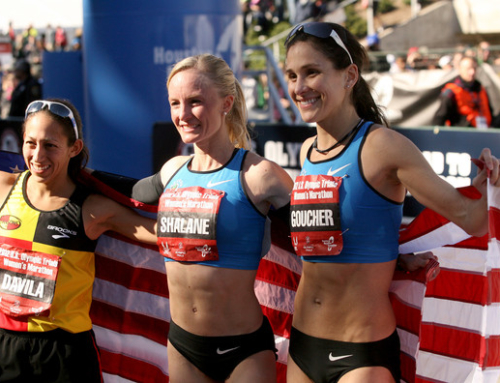By Eddie Pipkin
February 24, 2017
Every February my son and I head to Gainesville, Florida for the Hoggtowne Medieval Faire ( “step back in time and cheer on jousting knights, wander through the medieval marketplace where hundreds of artisans sell their wares, witness a battle on the living chess board, partake in olde world games  and rides and feast on food fit for a king”). It is delightfully peopled with participants who dress meticulously in themed costumes, and walking among them for the day is very much like stepping back in time. There are hundreds of civilians like me, snapping selfies and texting updates to our friends as we navigate the costumed participants who stay in technologically simplified character—one of my favorite parts is observing ancient techniques for cooking, sewing, metalworking, and minting coins. That’s why I couldn’t help but chuckle when I captured this picture in one of the artisan areas. You’ll note the two ladies, dressed in period costume and engaged in conversation, except the seated lady is also engaged with her cell phone! It is a melding of the best of both worlds, medieval and modern.
and rides and feast on food fit for a king”). It is delightfully peopled with participants who dress meticulously in themed costumes, and walking among them for the day is very much like stepping back in time. There are hundreds of civilians like me, snapping selfies and texting updates to our friends as we navigate the costumed participants who stay in technologically simplified character—one of my favorite parts is observing ancient techniques for cooking, sewing, metalworking, and minting coins. That’s why I couldn’t help but chuckle when I captured this picture in one of the artisan areas. You’ll note the two ladies, dressed in period costume and engaged in conversation, except the seated lady is also engaged with her cell phone! It is a melding of the best of both worlds, medieval and modern.
It’s what the young folk celebrate as a mashup. A mashup is the mixing or fusion of different cultural media. It’s a term most frequently used when blending two songs together (here’s a link to a YouTube posting of a mashup of 2016 praise worship songs), but it can apply to movies, memes, manuscripts, and more—and technology has made such creative blending easier than ever before). What caught my attention about the medieval lady and her iPhone adaptation was how perfectly it illustrated the way that we, as ministry leaders, should be thinking about worship. We should be taking the very best of the practices of our faith heritage, and using technology and cultural relevance to bring those practices to new generations.
I’m not just talking about “blended worship” here, a well-intentioned practice that has devolved in many settings to just doing a mashup that almost exclusively focuses on music selection—as in, let’s mix in some traditional hymns with some acoustic praise songs, so that everyone feels like they have a stake in the worship service. This strategy, in practice, rarely works because it is rarely well-executed and even more rarely given any context that moves a congregation beyond feeling like they have settled for some hybrid approach that doesn’t really inspire them in any meaningful way.
Pastor and worship consultant Constance Cherry writes that we should, instead, be thinking in terms of “convergence worship”. This is a more thoughtful process that moves beyond musical considerations to contemplate the ways in which other historically relevant elements of worship have embodied deep spiritual truths for generations of believers and can continue to do so today:
Expressions of worship that held meaning for worshiping saints of the past twenty centuries are either appropriate in their original form today or can be effectively recast in a contemporary manner. Either way, contemporary worship intentionally converges with the past not in order to maintain tradition but to celebrate the continuity of worshipers past and present. (quoted from Cherry’s article, “Blended Worship: What It Is and Isn’t”)
It’s about exploring ways in which liturgy that has been expressed for centuries can be given fresh context for new worshipers. It’s about sharing biblical knowledge in ways that don’t assume that everyone in attendance is already familiar with the fundamental stories and themes of our faith. It’s about making foundational theological concepts and creeds accessible for modern audiences (and even not-so-modern audiences that have been reciting the same words the same way for so long that they have forgotten what they actually mean).
This is the fresh approach of those who are designing deeply meaningful worship experiences that excite and engage all ages and all levels of spiritual maturity. Cherry writes that, “In contrast, persons who are attempting blended worship are often concerned with programming a little something for everyone to keep all parties happy.” That approach, of course, almost always results in everybody being disappointed. Further, she writes, “There is a big difference between embracing the old and the new to alleviate worship wars and embracing the old and the new out of a theological commitment to celebrating the relationship of worshiping saints of every generation.”
Ministry leaders can easily identify the sub-par outcomes that result when we refuse to embrace a healthy mashup philosophy: they are two opposite ends on the “philosophy of worship” spectrum. On the one hand is the traditional worship that refuses to embrace anything other than the words, format, and music of “the way we’ve always done it.” These are the congregations that are slowly dwindling away. On the other hand is the youth worship model that is so focused on being hip and relevant that it completely throws out centuries of deeply expressive liturgy. Thus, we find ourselves with passionate followers who never gain the spiritual toolkit to carry on through tough times.
Somewhere in the middle is an exciting place that values the timeless truths of our faith, while being honest and relevant about its intersection with the world in which we live. And what is perhaps most exciting about this approach is that it’s not just generational, multi-cultural, etc. It lends itself to local and regional adjustments. It lends itself to denominational strengths and the inspirations of specific community settings. A strong worship planning team with a variety of voices and perspectives can bring such worship to life. It’s a pathway to vibrant worship that connects with people in ways that carry over into the creation of powerful discipleship ministries and real-world impact.
The ways in which local congregations design and implement worship experiences (and the whole idea of worship as a lifestyle instead of worship as once-a-week event) is one of the transformation explored in Phil Maynard’s Shift book and training material. Continue the discussion below, ask questions, or check out material to empower congregations at the Excellence in Ministry Coaching website (emc3coaching.com).







Leave A Comment